Apple revealed updates to its iPad lineup in October 2022 via press releases rather than holding a flashy event. The 10.9-inch iPad replaces the 10.2-inch iPad, though that model is still available at heavy discounts.
The updated design was expected for this entry-level iPad since it was the last model still sporting a Home Button. However, Apple made some interesting decisions that separate this model from every other iPad in the lineup.
The 10.9-inch iPad stands out with its candy-colored exterior and landscape-oriented FaceTime camera. However, the most notable aspect of this tablet is its accessory story.
The Smart Connector on the bottom edge of the frame means it cannot use Apple's Magic Keyboard. Bluetooth keyboards still work and magnetic folios too.
Apple Pencil Pro only works with newer iPads, so the Apple Pencil USB-C and first-generation Apple Pencil with dongle are all that are compatible.
All signs point to an iPad 11 arriving sometime in early 2025. It will likely support the Apple Pencil Pro and have an A18 processor to gain access to Apple Intelligence.
10.9-inch iPad design
It would be easy to mistake the 10.9-inch iPad for an iPad Air if it weren't for its bright color scheme. It can be configured in blue, pink, yellow, or silver colors — ones that are much more vibrant than previous iPad offerings.
The Home Button has been discarded in favor of an edge-to-edge display with symmetrical bezels. Touch ID is available via the Top Button, similar to the iPad Air.
The Smart Connector didn't move from its spot on the bottom edge of the iPad. However, Apple did include an array of magnets in the rear of the device for accessory mounting like other modern iPads.
Apple's proprietary Lightning port has been exchanged for a USB-C port. Normally, that would warrant support for the second-generation Apple Pencil, but Apple did not include a charging pad in this model.
Despite looking similar to an iPad Air, it is slightly thicker and heavier. This all-screen design has finally reached every level of iPad.
Display
The display is nearly identical to the iPad Air with a 2360-pixel by 1640-pixel resolution at 264 ppi. It has True Tone and 500 nits of brightness.
This display is not laminated, nor does it have an anti-reflective coating. These features are reserved for more premium models.
That means content will appear further away from the display glass. This makes for a less-than-optimal Apple Pencil experience.
The available color spectrum is also less-than other iPads. It uses the sRGB range instead of P3.
10.9-inch iPad features
Apple's 2022 entry-level iPad has all of the fundamental features of its tablet lineup. It runs iPadOS with access to various iPad-specific apps on the App Store.
While the iPadOS 16 special windowing feature, Stage Manager, won't work on this model, everything else is still available. New features like iCloud Shared Photo Library, a native Weather app, and Focus Filters can all be accessed.
The hardware won't present a remarkably different iPad experience from other models, with some exceptions.
Apple introduced a handful of new features in iPadOS 17 that benefit its entire tablet lineup, like interactive widgets and customizable lock screens. Any iPad with a USB-C port can interact with external webcams and capture cards too.
Cameras
The rear 12MP camera with an f/1.8 aperture can take excellent photos and record 4K video. It is an identical camera system to the one used in the iPad Air.
What's new is the front-facing camera and its location. Apple moved it to the landscape side of the iPad for better FaceTime calls in that orientation.
This relocation had been rumored for years since Apple offered keyboards that kept the iPad in landscape. Unfortunately, FaceTime calls on the portrait-side camera created awkward off-center viewing angles.
The selfie camera is a 12MP Ultra Wide sensor with 122 degrees of view. In addition, it offers Center Stage, a feature that keeps subjects centered, and it can record 1080p video.
Moving the camera to this side seems to have created an accessory conundrum for Apple. The camera hardware is sitting exactly where an Apple Pencil charging pad would be, so instead of relocating this pad, Apple opted to exclude it.
iPadOS 18
Announced at WWDC 2024, iPadOS 18 will debut in the fall and will bring a handful of new features to Apple's flagship tablet. Many new features are shared with iOS 18, but several are iPad-exclusive.
Smart Script
Part of the Notes app, iPadOS now lets users perform text editing on their handwriting through a feature called Smart Script. For handwritten notes in Notes, users can now spellcheck their text, with changes made to blend into the user's scribbles.
Calculator
After years of user request, Calculator has finally come to iPad. As part of its debut, Apple has created a new Math Notes feature, allowing users to handwrite their math problems. When writing in expressions, the Calculator will immediately solve problems once an equal sign is written.
Updates shared with iOS 18
A redesigned Collections feature in the Photos app automatically organizes the library by topics like Recent Days, Trips, and People & Pets. If you have a few favorite collections, you can pin them for quick access to the collections or albums most important to you.
Control Center now has more robust customization options. This includes the ability to sort controls under categories, as well as swapping out controls on the main screen.
Users are no longer restricted to the standard app icon layout anymore. The new iOS 18 adds the ability to arrange apps along the bottom for quicker access or along the side to frame a favorite wallpaper. Icons on the home screen can also be tinted to fit your theme better.
New text effects allow you to animate words and emojis with various effects. Some words and phrases will automatically display a suggestion, but users can add text effects to any text they select. Users can now bold, underline, italicize, and cross out text.
Apple has expanded Tapback options for Messages, now allowing users to respond with any emoji or sticker, including live stickers and stickers from packs purchased through the Messages App Store.
Send Later allows users to schedule when to send a message, perfect for ensuring you don't send someone a message when they're sleeping or when you want to schedule a birthday message.
Game Mode minimizes background activity while gaming. This allows the iPhone to sustain high frame rates for long gaming sessions.
Apple has added the ability to create, view, edit, and complete reminders from the Reminders app in the Calendar app. It has also redesigned the month view for easier browsing.
Apple Intelligence
Apple Intelligence is Apple's initiative to incorporate artificial intelligence into its products. Due to Apple's emphasis on security, most of the Apple Intelligence processes take place on the device itself.
Additionally, Apple defines Apple Intelligence as "personal intelligence," with a focus on improving how users engage with the apps and services they already use, rather than concentrating on new use cases.
Apple Intelligence is only available on M-series Macs, iPads, and iPhones equipped with the A17 Pro chip or newer. It could arrive in the iPad 11 thanks to an upgrade to the A18 processor.
A14 Bionic processor
The A14 Bionic was first used in the iPhone 12 in 2020. It is a performative processor that still outclasses many competitors, but it is at the bottom of Apple's existing offerings.
The iPad has 4GB of RAM with a 4-core CPU and 6-core GPU. It scores 1,571 single-core and 3,863 multi-core on Geekbench.
Users shouldn't notice any lag or slowdown when performing routine tasks or playing casual games. The A14 is more than capable of handling general workflows.
Connectivity and battery
The USB-C port opens up the base iPad to new accessory types. That means users can attach external storage, microphones, keyboards, and more without needing an extra dongle.
As expected, Apple quoted the 10.9-inch iPad's battery life at 10 hours. This varies based on how intensive an app is or display brightness, but it tends to be an accurate estimate.
Apple kept things simple for wireless connectivity by continuing to offer WiFi 6. The Bluetooth technology is version 5.2.
Apple Pencil support
The 10.9-inch iPad has support for the 1st-generation and USB-C Apple Pencils. It lacks the charging pad necessary to pair with the 2nd-generation model.
The original Apple Pencil has a Lightning connector designed to plug directly into a Lightning-based iPad for pairing and charging. However, since the new iPad uses USB-C, Apple had to introduce a new adapter.
This adapter is $9 and is included in first-generation Apple Pencil purchases. Existing owners will need to purchase it separately as it is not included with the iPad.
Apple's odd decision surrounding Apple Pencil support in the updated iPad can be explained by the landscape-oriented camera. It isn't clear why Apple didn't try to relocate the charging pad instead of opting for this odd workaround, but it may simply be due to space constraints.
A year after this controversial design, Apple announced the Apple Pencil with USB-C. It looks like the second-generation model but lacks pressure sensitivity and can't charge via a magnetic connection.
Instead, it charges via a USB-C port hidden beneath a sliding cap. The cap can't be removed, so users don't need to worry about losing it like with the original.
Despite not being able to charge magnetically, the Apple Pencil with USB-C can still attach to the 10.9-inch iPad magnetically for storage.
Customers can also purchase the Logitech Crayon, which was updated with a USB-C port. It simplifies the charging and pairing process despite having fewer features than the Apple Pencil.
The controversy around this decision was short-lived, as pro users who care about the Apple Pencil bought higher-end iPads and those looking at this entry model didn't comment or didn't care.
Magic Keyboard Folio
Since the Smart Connector is still at the bottom of the iPad, Apple had to introduce a new accessory — the Magic Keyboard Folio. This keyboard is purpose-built for the 10.9-inch iPad and comes in two pieces.
The keyboard half of the folio is a separate piece that magnetically attaches to the base Smart Connector. It can be folded shut to protect the display.
A second half of the folio attaches to the rear of the iPad using the rear magnets. It has a kickstand that supports the iPad when using the keyboard. The two pieces must be used in tandem since the keyboard cannot hold the iPad aloft.
The iPad can be removed from the keyboard, so the case is left protecting the rear of the device. This can be handy when using the Apple Pencil for art with the kickstand deployed.
The keyboard itself goes edge to edge, and thanks to the roomier design, there is a function row. In addition, there are dedicated keys for brightness and media controls, something the Magic Keyboard for iPad Pro doesn't have.
The trackpad is also prominent as well. Again, the keyboard and trackpad design takes advantage of the extra real estate since the iPad isn't hovering aloft and obscuring part of the case.
10.9-inch iPad compared
Apple's 2022 iPad sits at a middle point in the lineup, which may confuse some customers. It is more premium and expensive than the 10.2-inch iPad, but it offers a lower quality experience than the iPad Air.
Here's how it compares to other models.
Versus iPad Air 5
There are more things similar than different between the 10.9-inch iPad and the iPad Air 5. For example, the external cases are almost identical, the displays have the same resolution, and they both have USB-C and Touch ID.
The differences come in how they are used and what accessories are supported. For example, the iPad Air has a more vibrant P3 color display with lamination.
The iPad Air's Apple Pencil situation is much less complex thanks to simple 2nd-generation support. With both tablets side by side, it is clear that iPad Air is the winning choice for artists.
The M1 processor in the iPad Air also means faster media processing and editing workflows. The A14 is no slouch, but the M1 is the clear superior.
The iPad Air also supports the Magic Keyboard. That is especially useful for those who already own one of these expensive keyboards.
However, the iPad Air is more expensive thanks to these better features. The base model is $150 more expensive at $599.
The iPad Air 5 is a clear upgrade from the 10.9-inch iPad. Customers will have to decide if the upgraded display, processor, and Pencil support will be enough to sway them.
Versus OnePlus Pad
The OnePlus Pad is an 11-inch Android tablet with a competitive price that places it up against Apple's latest budget iPad. At $479, some may consider the OnePlus Pad over Apple's $449 iPad.
The OnePlus Pad has an 11.61-inch display with 500 nits of brightness and a 144Hz refresh rate. It is a pixel-dense display at 295ppi, versus iPad's 264ppi.
The specs compare well against the 10.9-inch iPad, which only has a 60Hz refresh rate and a slightly smaller display. However, this is still a product that runs Android, not iPadOS.
The iPad has an A14 Bionic, which handily outperforms the OnePlus Pad with a MediaTek Dimensity 9000 for the CPU ARM Mali-G710 MP10 for the GPU.
The iPad scored 2,009 single-core and 4,473 multi-core on Geekbench. The OnePlus Pad scored 1,259 single-core and 3,199 multi-core by comparison.
As usual, this all comes down to ecosystem choice. Those heavily invested in the Apple ecosystem will have trouble choosing any tablet that doesn't run iPadOS.
10.9-inch iPad pricing
Apple increased the price of the 2022 iPad by $120. The base model comes with 64GB of storage for $349 and can be upgraded to 256GB for $499.
Customers can choose to add cellular for a $150 upcharge. Get it in blue, pink, yellow, or silver.
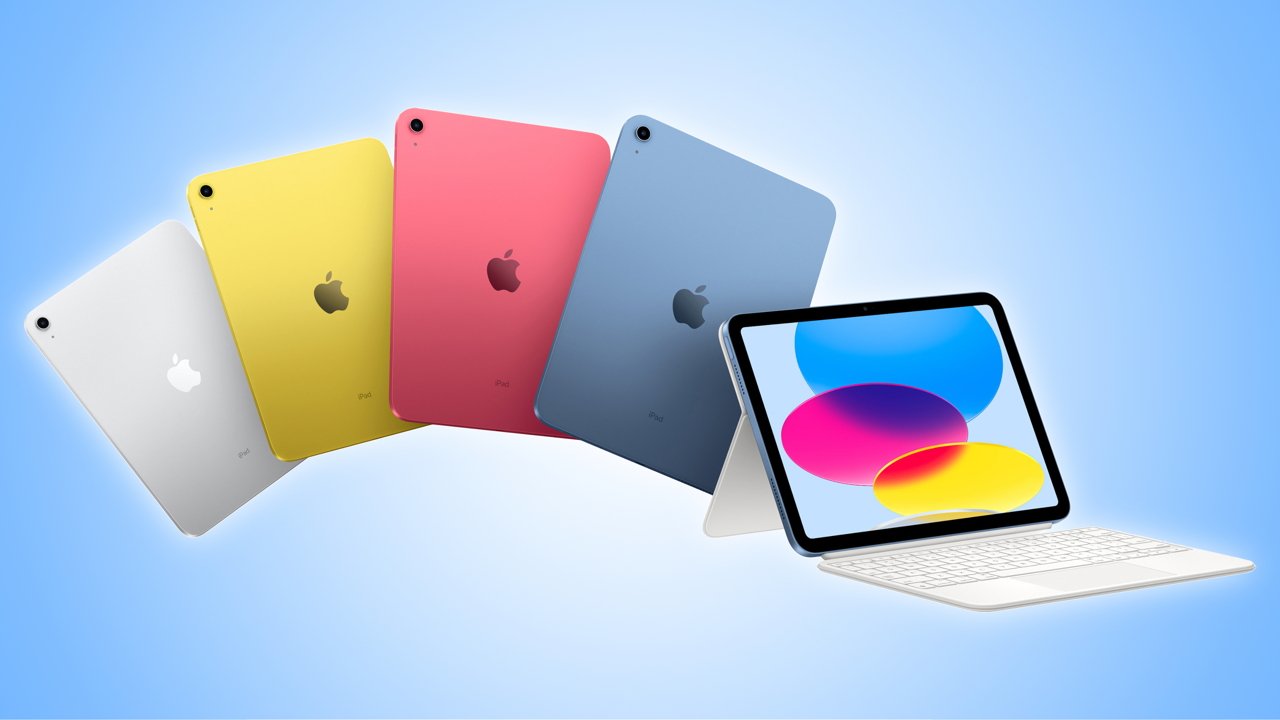
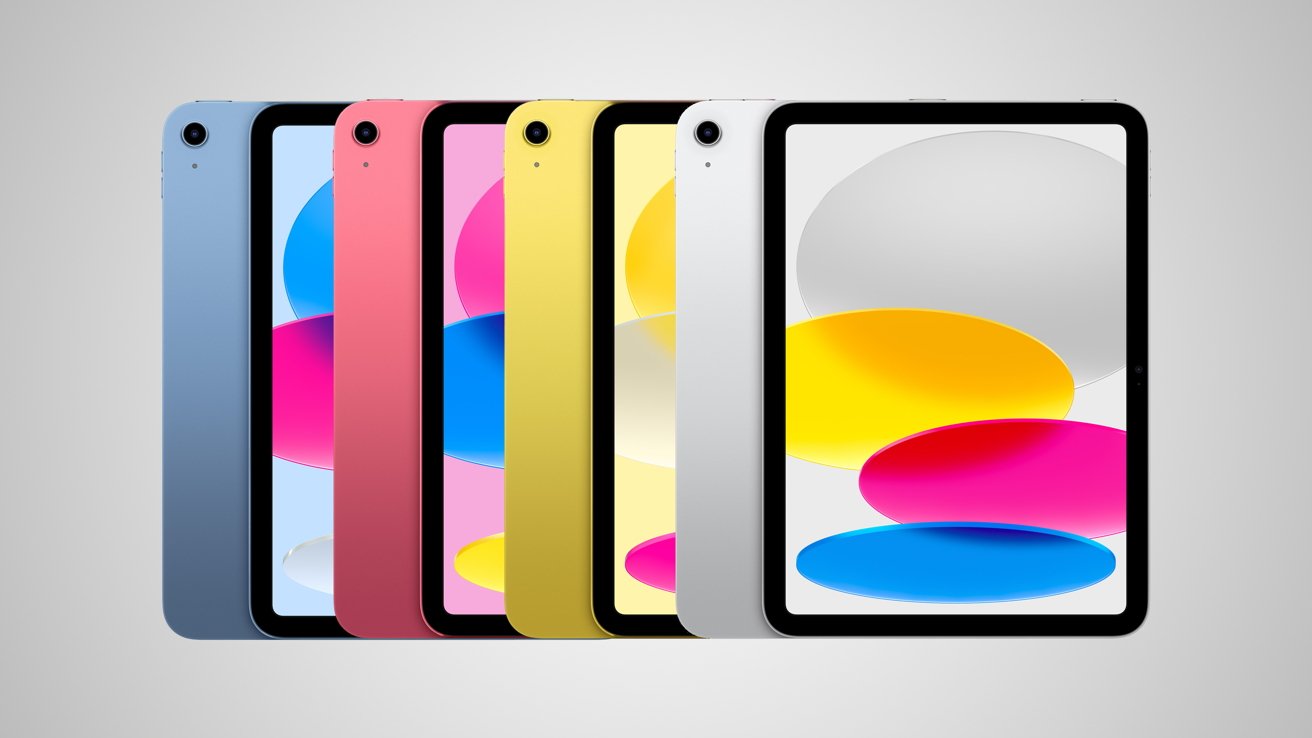
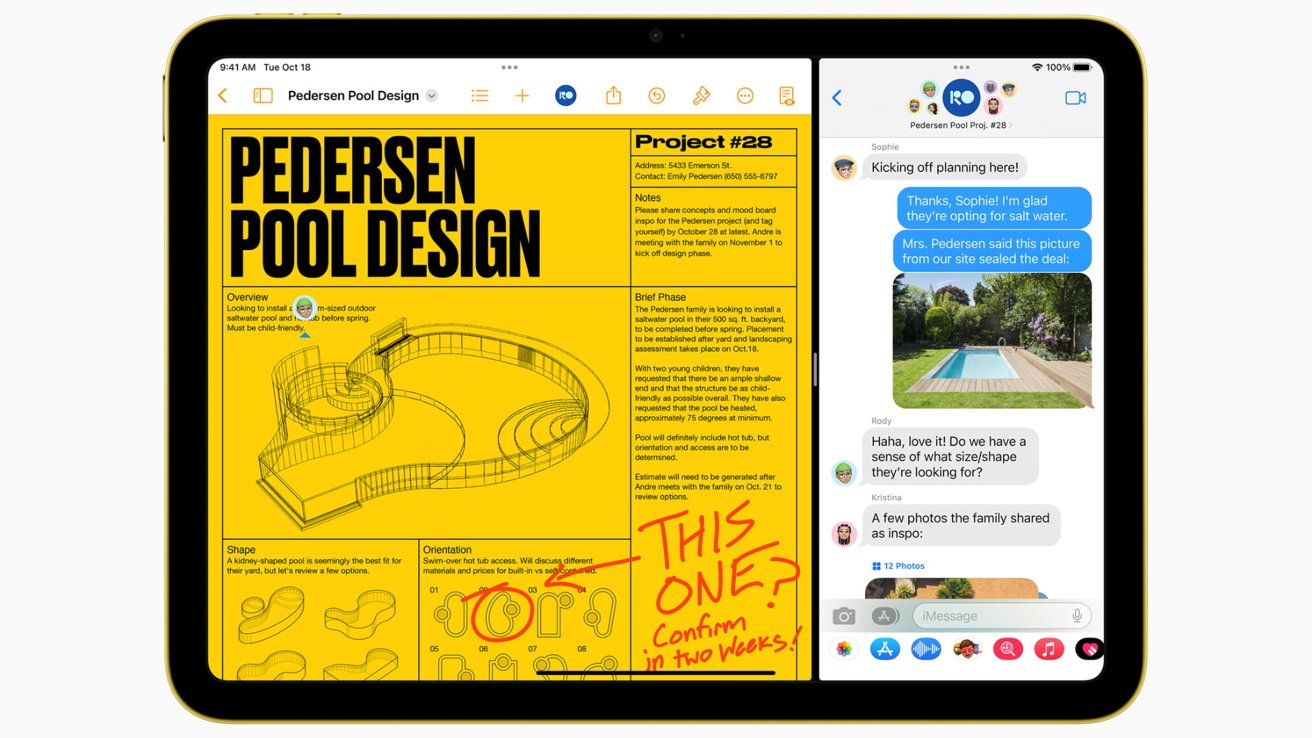
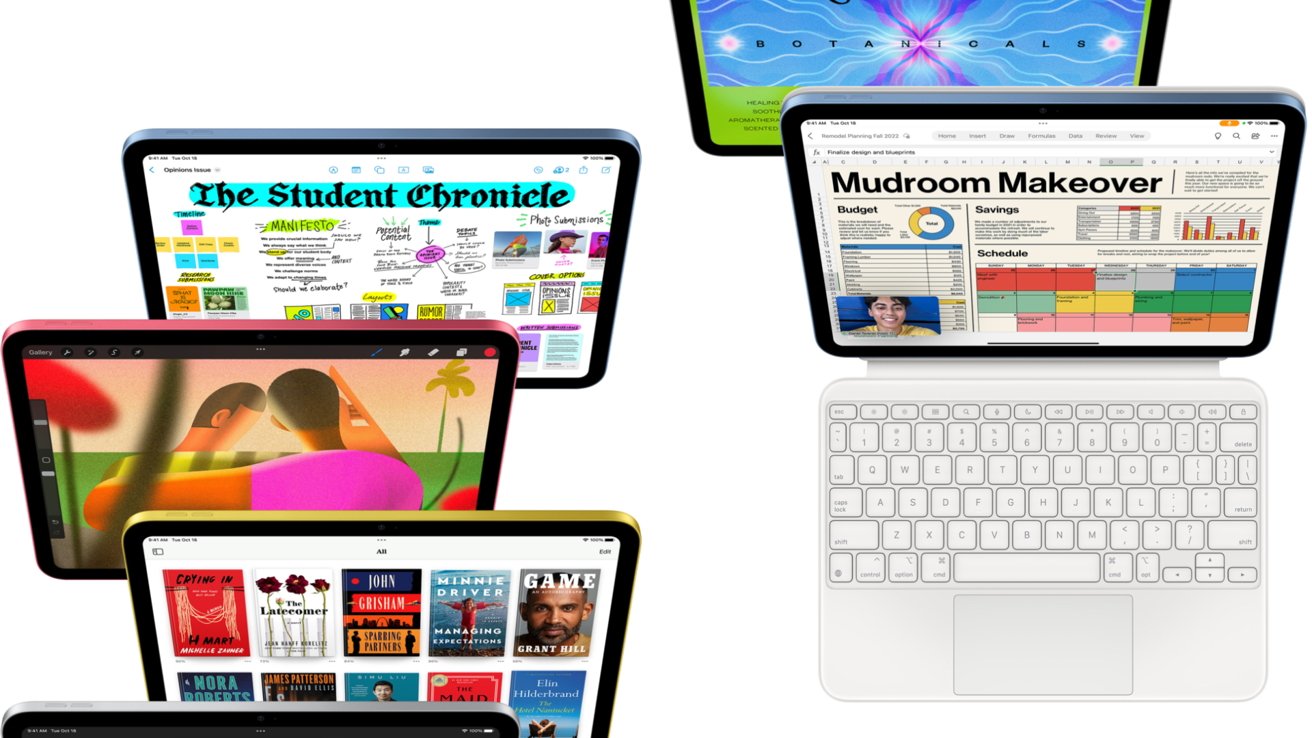
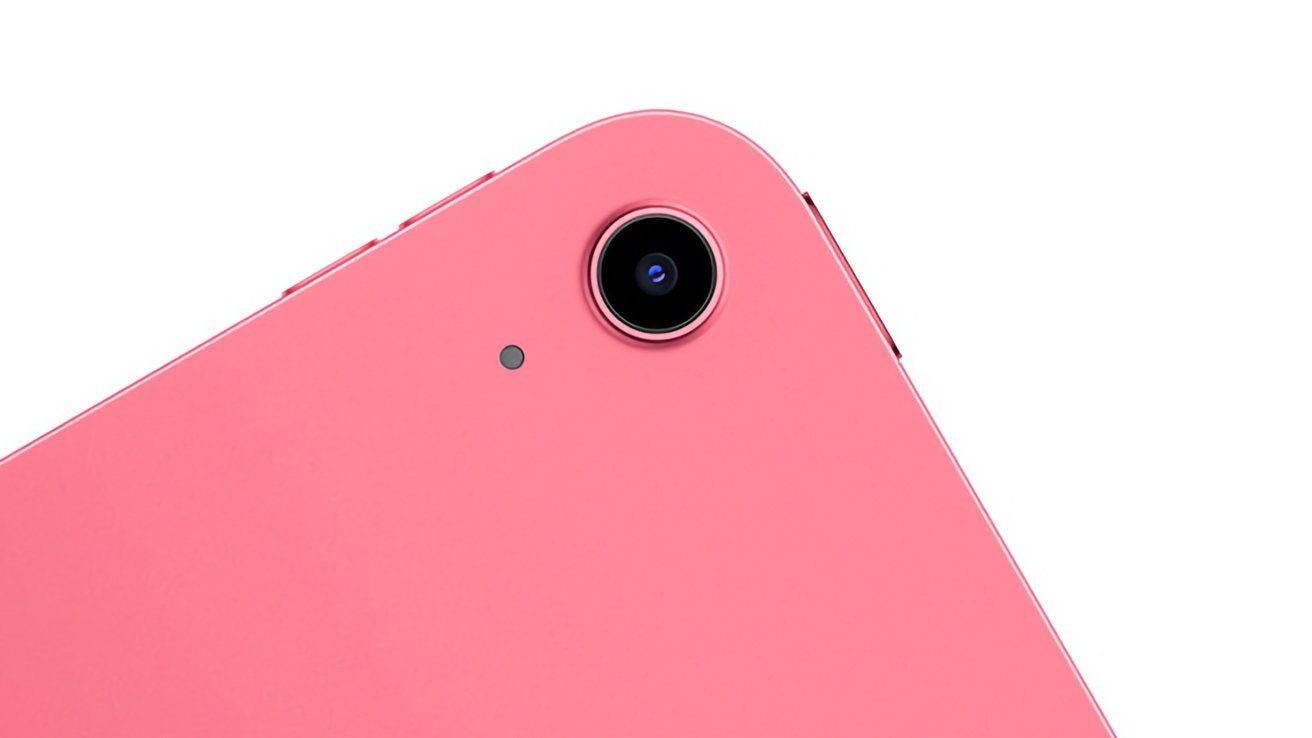
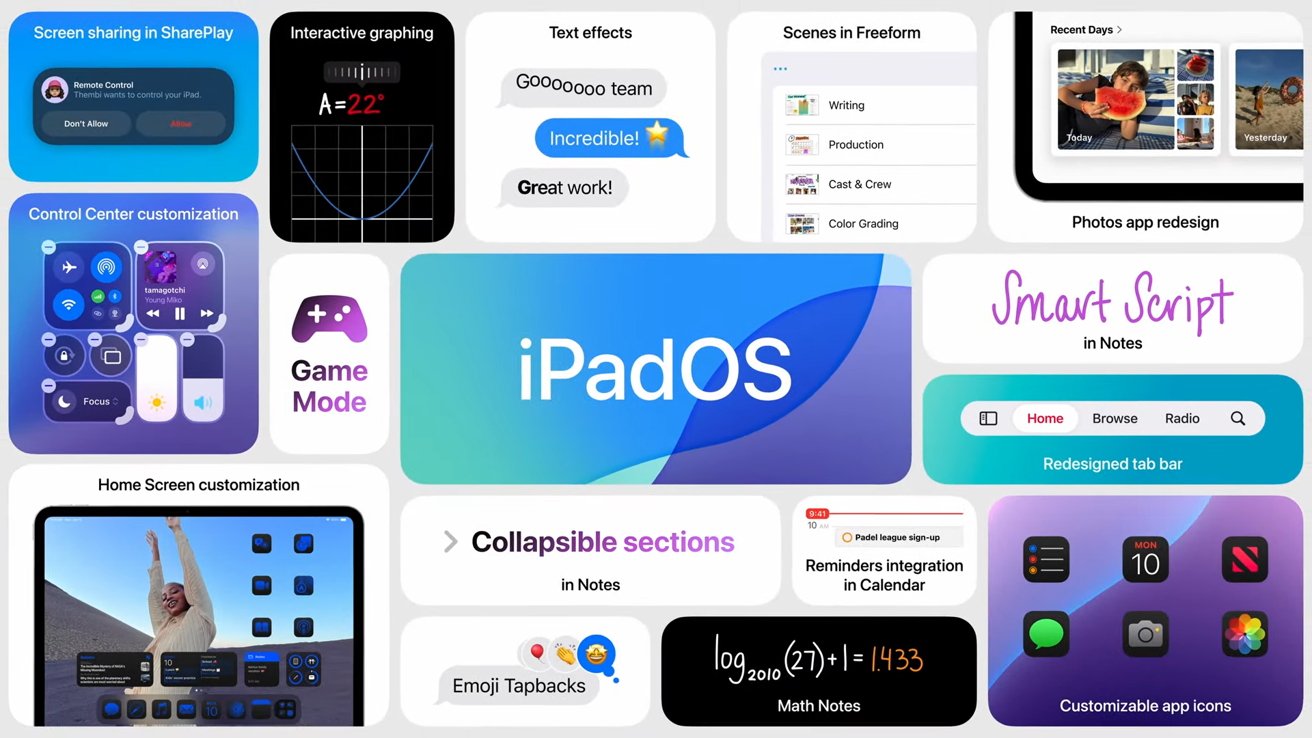

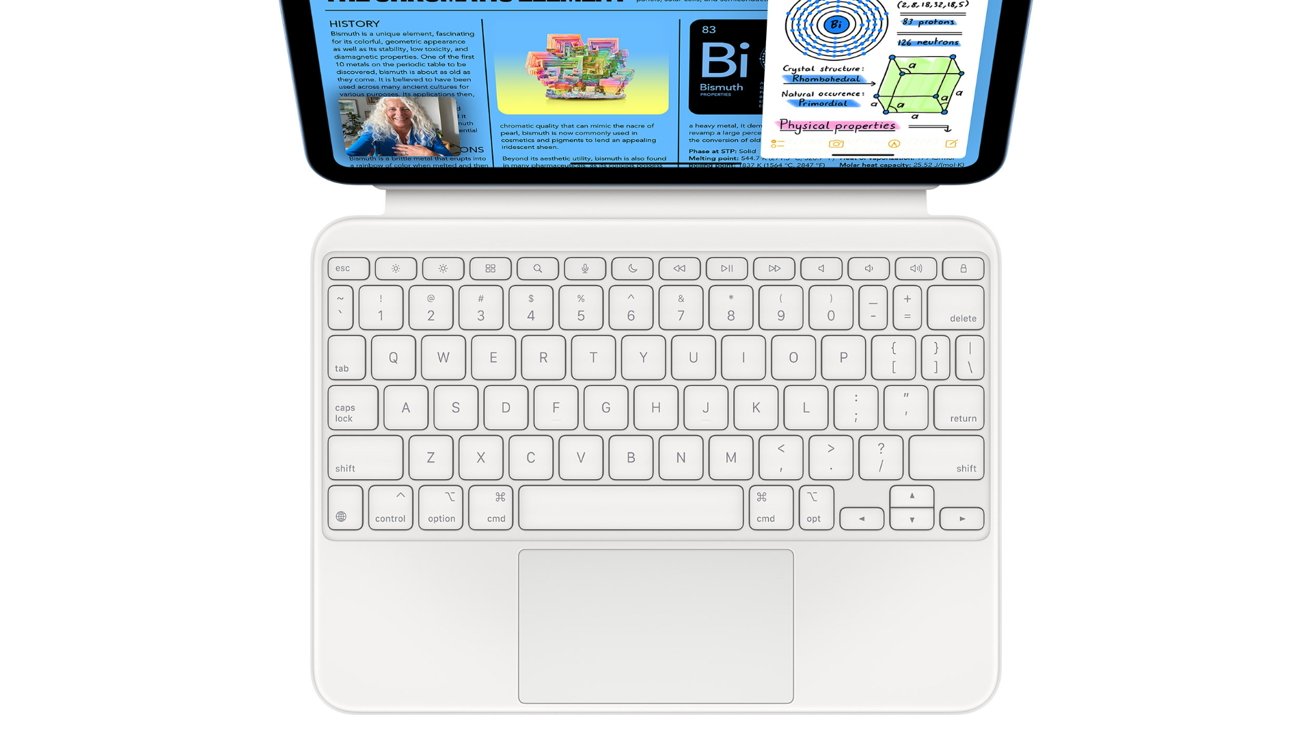

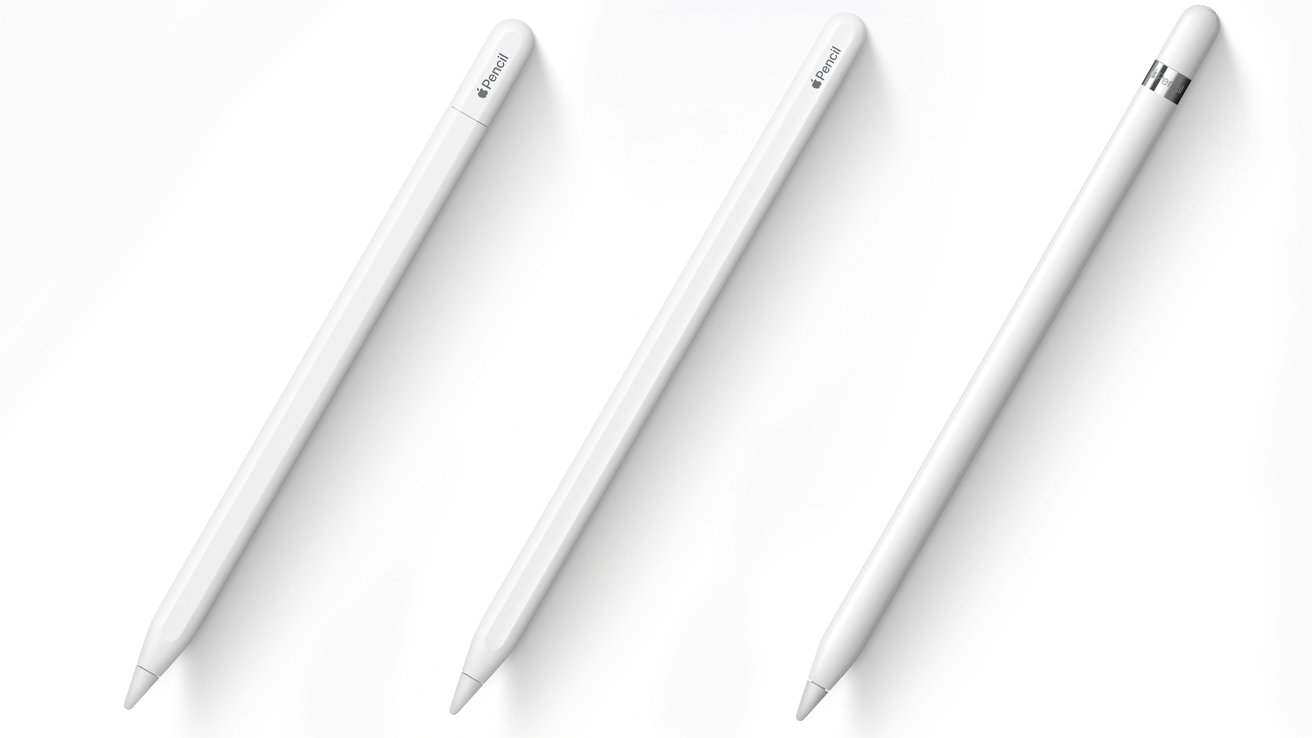

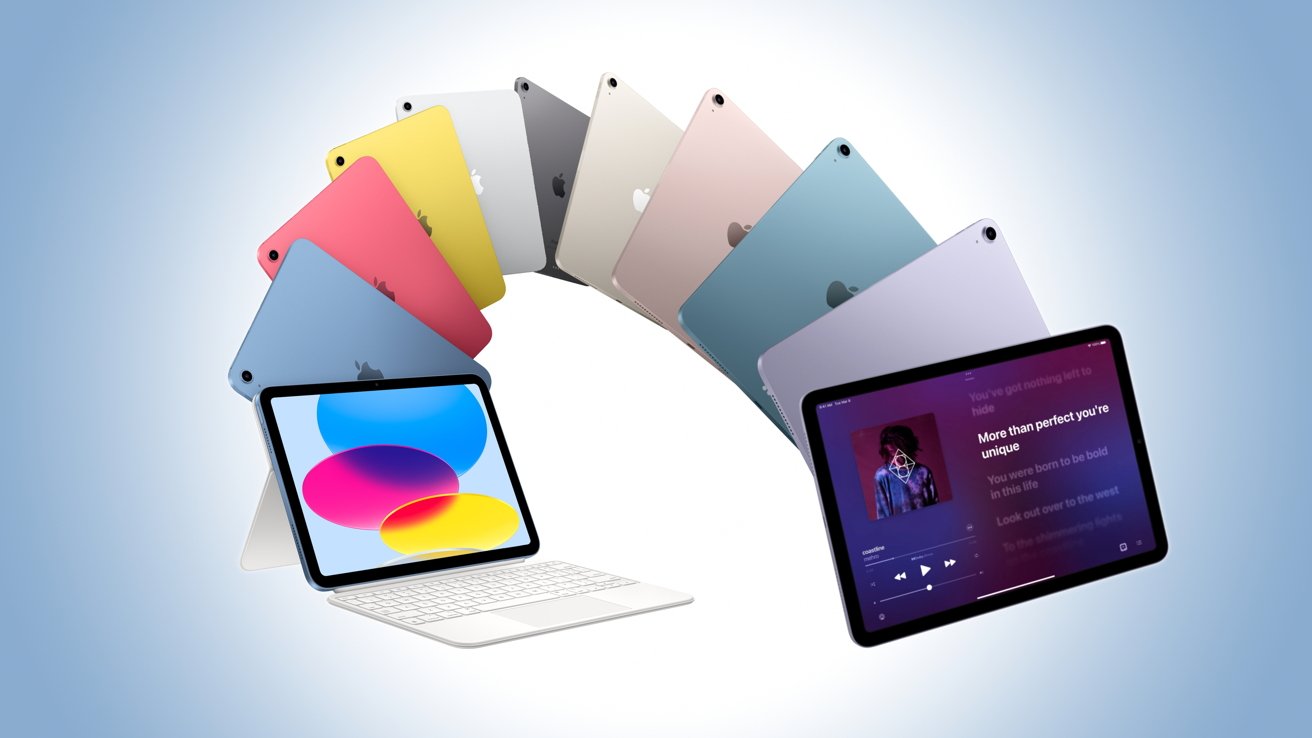
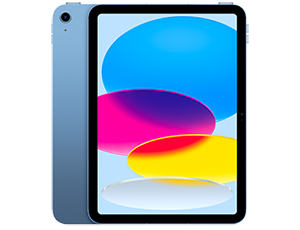
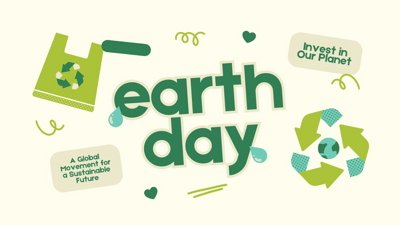
 Andrew Orr
Andrew Orr
 Malcolm Owen
Malcolm Owen


 Marko Zivkovic
Marko Zivkovic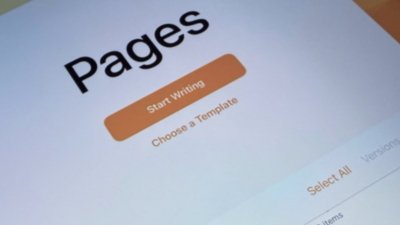
 William Gallagher
William Gallagher


 Christine McKee
Christine McKee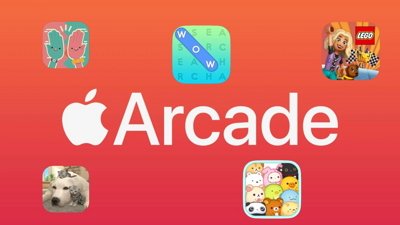
 Amber Neely
Amber Neely